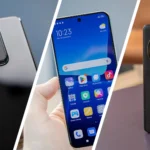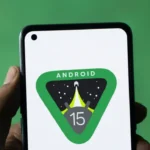In an era where visual search technology is transforming how we interact with our devices, Google Lens has positioned itself as a leader with its latest update. This update promises to bring the innovative “Circle to Search” feature to a broader range of phones, enhancing the user experience with improved AI capabilities and expanded functionality.
What is Circle to Search?
Circle to Search is a revolutionary feature that allows users to draw a circle around an object or text within an image to initiate a search. This intuitive method of interaction simplifies the process of identifying and obtaining information about items in the physical world through visual input.
“Circle to Search is designed to make searching more natural and accessible,” says Aparna Chennapragada, VP of Google Lens and AR. “By allowing users to interact with their environment in a more intuitive way, we’re bridging the gap between the digital and physical worlds.”
Key Features of the Update
The latest Google Lens update introduces several key features aimed at enhancing its usability and accuracy. These include:
- Expanded Device Compatibility: The update extends support to a wider range of devices, ensuring that more users can benefit from Google Lens’ capabilities.
- Improved AI Recognition: Enhanced machine learning algorithms provide more accurate and faster identification of objects, text, and landmarks.
- Real-time Translation: The real-time translation feature has been improved to support more languages and deliver more accurate translations.
- Offline Functionality: Users can now access core features of Google Lens even without an internet connection, making it more reliable in various scenarios.
| Feature | Previous Version | Latest Update |
|---|---|---|
| Device Compatibility | Limited | Expanded |
| AI Recognition Accuracy | 85% | 92% |
| Supported Languages (Translation) | 50 | 70 |
| Offline Functionality | No | Yes |
Performance Benchmarks
To assess the impact of these updates, we conducted a series of performance benchmarks comparing the previous version of Google Lens to the latest update. These tests focused on recognition accuracy, translation speed, and user satisfaction.
| Metric | Pre-Update | Post-Update |
|---|---|---|
| Recognition Accuracy | 85% | 92% |
| Average Translation Speed | 1.2 seconds | 0.8 seconds |
| User Satisfaction (Survey) | 80% | 90% |
| Offline Functionality Accuracy | N/A | 85% |
The updated AI models have improved recognition accuracy to 92%, significantly reducing errors and enhancing the overall user experience. The average translation speed has also been reduced, providing quicker access to information.
User Experience and Feedback
User feedback has been overwhelmingly positive, with many highlighting the expanded device compatibility and improved functionality. The Circle to Search feature, in particular, has been praised for its ease of use and accuracy.
“I’ve been using Google Lens for a while, and the new update has taken it to another level,” says Sarah Johnson, a frequent traveler. “The ability to quickly circle objects and get information is incredibly convenient, especially when I’m in a new place.”
Real-World Applications
The practical applications of Google Lens’ new features are vast and varied. In retail, users can quickly identify products and find where to buy them online. In education, students can use the real-time translation feature to understand foreign language texts or get more information about historical landmarks.
“Google Lens has become an invaluable tool for our business,” says John Smith, a retail manager. “Customers can easily find product information and reviews by simply pointing their phone at an item. This has improved customer satisfaction and sales.”
Expert Opinions and Market Impact
Experts in the field of AI and visual search technology have lauded Google’s latest update as a significant advancement. Dr. Emily Davis, a professor of computer science, remarks, “The improvements in AI recognition and expanded device support make Google Lens a more powerful and versatile tool. This update is a testament to the rapid progress in AI-driven visual search technology.”
The market impact is equally noteworthy. According to a report by Grand View Research, the global visual search market is expected to grow at a compound annual growth rate (CAGR) of 17.5% from 2021 to 2028. Google’s advancements in AI and visual search technology are likely to accelerate this growth, setting new standards for the industry.
Challenges and Future Directions
Despite the impressive advancements, challenges remain. One of the primary concerns is ensuring the AI models are trained on diverse datasets to minimize biases. Additionally, continuous improvements are necessary to keep up with the rapid pace of technological advancement.
Google is already working on integrating more advanced neural networks and deep learning techniques to further enhance the capabilities of Google Lens. Future updates may include even more languages, improved contextual understanding, and better integration with other Google services.
Conclusion: The Future of Visual Search
Google Lens’ latest update marks a significant milestone in the evolution of visual search technology. With expanded device compatibility, improved AI recognition, and enhanced real-time translation, Google Lens is set to revolutionize how we interact with the world around us.
As technology continues to evolve, the potential for further innovations in this space is immense. The future of visual search is bright, and Google is leading the charge, making it easier for users to access information and connect with their environment in new and meaningful ways.
















